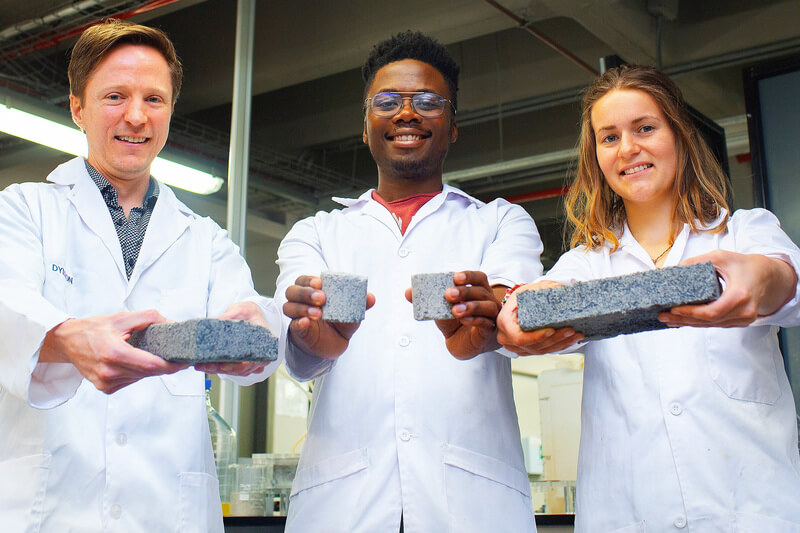THE world’s first bio-brick created from human urine has been unveiled at University of Cape Town in South Africa.
Bio-bricks are created through a natural process called microbial carbonate precipitation, similar to the way seashells are formed. Dyllon Randall, a senior lecturer in water quality engineering at UCT, has supervised the project by Masters civil engineering student Suzanne Lambert.

Loose sand is colonised with bacteria that produce urease, and enzyme that breaks down the urea in urine while producing calcium carbonate through a complex chemical reaction. This cements the sand into any shape, whether it’s a solid column or a rectangular building brick.
For the past few months, Lambert and civil engineering honours student Vukheta Mukhari have been hard at work in the laboratory, testing various bio-brick shapes and tensile strengths.
The development is good news for the environment and global warming, as bio-bricks are made in moulds at room temperature. Regular bricks are kiln-fired at temperatures around 1 400°C and produce vast quantities of carbon dioxide.
The concept of using urea to grow bricks was first tested in the United States some years ago using synthetic solutions, but Lambert’s brick is the first to use human urine – with significant promise for waste recycling and upcycling. Her work builds on research by Jules Henze, a Swiss student who spent four months working with Randall on the concept in 2017.
Chemically speaking, urine is liquid gold, according to Randall. It accounts for less than one percent of domestic waste water by volume, but contains 80 percent of the nitrogen, 56 percent of the phosphorus and 63 percent of the potassium of all waste water.
The bio-brick process yields nitrogen and potassium as by-products, which are common components of commercial fertilisers. Almost all of the phosphorus in the urine (97 percent) can be converted into calcium phosphate, a key ingredient in fertilisers. This is significant because the world’s natural phosphate reserves are running dry.
To create the bricks, urine was collected in specialised urinals and used to make a solid fertiliser. The remaining liquid was then used to grow the bio-bricks.
“But in that process, we’re only after two components: carbonate ions and the calcium. What we do last is take the remaining liquid product from the bio-brick process and make a second fertiliser,” he explained.
The overall scheme would effectively result in zero waste, with the urine completely converted into three useful products.
The strength of the bio-bricks would depend on client needs. “If a client wanted a brick stronger than a limestone brick, you would allow the bacteria to make the solid stronger by ‘growing’ it for longer,” said Randall.
“The longer you allow the little bacteria to make the cement, the stronger the product is going to be.”




























